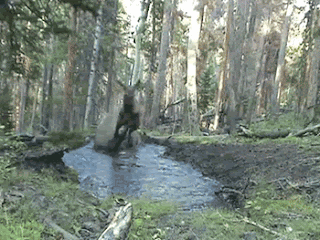There is a feeling out there that can really change the way we think. Sometimes it’s really good to be stressed out over certain things. If you have four papers due the next day you need that sense of urgency to get it done. When this stress becomes a constant, it is called anxiety. You can be anxious over the simple things like school, friends, family, and just stressful times. Anxiety isn’t all bad though because it can save you from bad situations.
When it’s Good it Helps
| Figure 1 |
Anxiety in small amounts can really help you when things could be bad. Right before a test, anxiety helps you focus on your notes and helps you zone out distractions. On the football field, it can help you find the tacklers and avoid them with hyperfocus (Figure 1). It also alerts you when things just seem a bit weird. Anxiety was meant to be a good thing for us to utilize to protect ourselves. Our bodies have natural triggers and filters to protect us from too much of it. These natural reactions that give us anxiety happen more often than you think. It can happen when you see big bugs, walk by yourself, or even right before you read a book. Anxiety helps in a lot of everyday activities, we just don’t feel anxious because of the natural walls. A little bit of anxiety helps us get through our challenges throughout a long day.
Too Much Can Hurt
| Figure 2 |
Anxiety has its natural borders that we talked about already. These borders can be broken by a terrible thing called disorders. These disorders come in a huge variety and effect you in a billion different ways. These disorders have huge effects on not just your mind but sometimes your body too. When the body does to much of anything it tends to be bad. This is an extreme case, when anxiety is overflowing it can be really bad for you. It can cloud the way you think about basic stuff. Instead of laser sharp focus your thoughts are all over the place. The person in the picture has tons of thoughts and he can’t seem to focus (Figure 2). I know of a disorder called a phobia that means you’re really afraid of one thing. Arachnophobia would be the fear of spiders and Claustrophobia would be the fear of tight spaces. These are examples of your body having anxiety over something that you should be worried of but just too worried. Some other disorders involve social anxiety. This disorder is very special, it makes you think a lot about people around you. The people in your head can be all good or all bad depending on your mood, this can lead to some problems when you’re making new friends and going out for jobs. Anxiety can really hurt people and is a very under talked about topic amongst our kids.
Try to Help!
Some kids have enormous troubles trying to get around their own anxieties. Whether they have a disorder or not, we should really try to help out people who are having a lot of stress. Anxiety isn’t something you can just ignore. It gets really deep under you skin, and can come out with a lot of problems. Friends, family, and just talking about it can help you get over a lot of the struggles that come with anxiety (Figure 3). If you have a disorder, you can go to your doctor and he will help you get past your problems. Anxiety isn’t meant to be a bad thing and you can easily overcome anything it throws at you!
| Figure 3 |
CalmClinic. (n.d.). The Origination of Anxiety. Retrieved from http://www.calmclinic.co m/anxiety/is-it-all-in-your-head
University of Michigan Department of Psychiatry. (n.d.). Anxiety. Retrieved from http://www.psych.med.umich.edu/mental_health/anxiety.asp
















